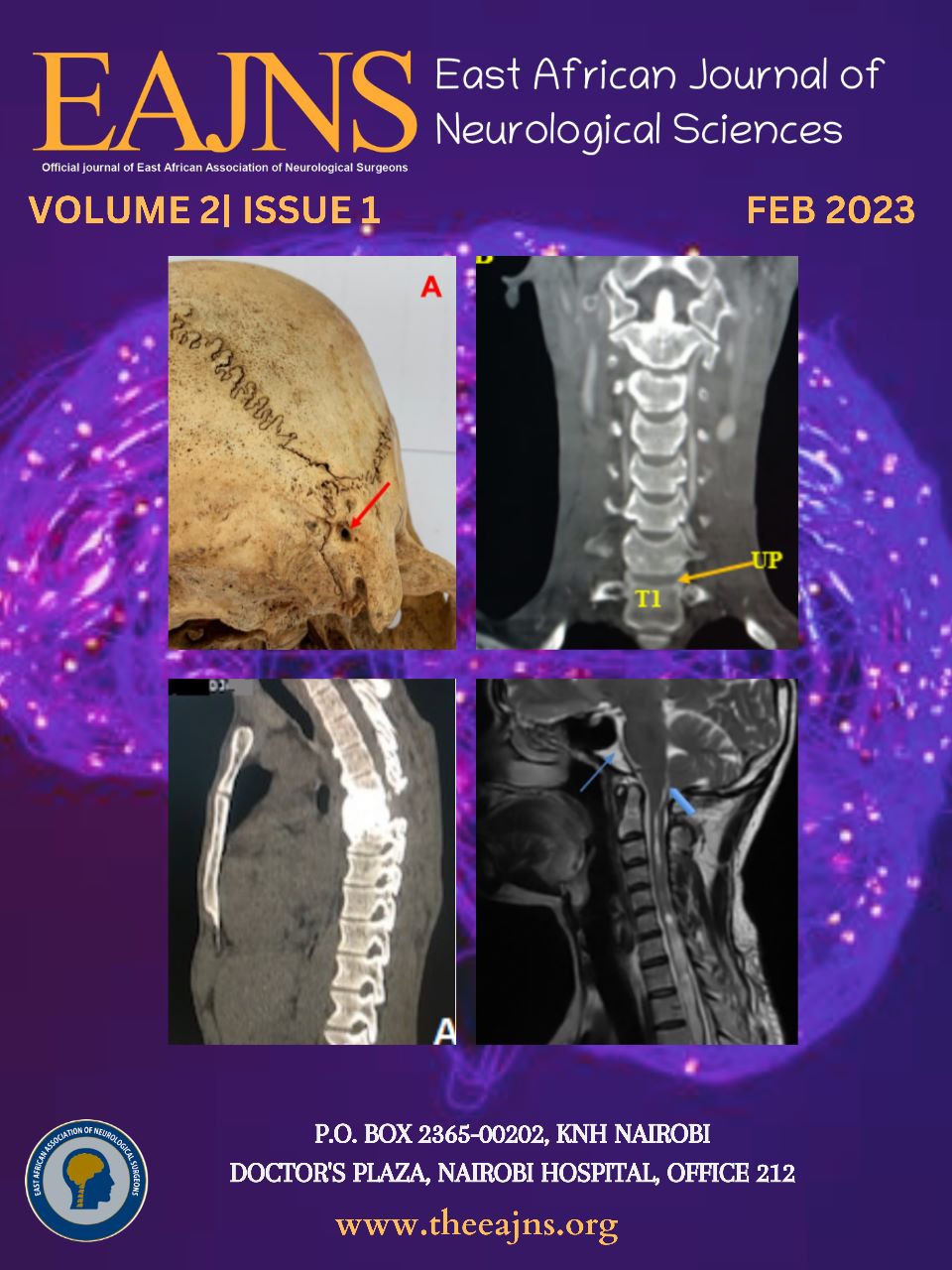Main Article Content
Management of chronic subdural hematoma in adults at the Renaissance University Hospital Center in Ndjamena (Chad)
Abstract
Introduction: A chronic subdural hematoma (CSDH) is a collection of old blood between the dura mater and the cranial arachnoid. It is a commonly encountered condition in neurosurgery. The goal of the study was to describe the epidemiological, clinical, paraclinical, therapeutic, and evolutionary aspects of CSDH. Methodology: This was a prospective observational and descriptive study conducted over a 22-month period. Any patient presenting with CSDH on a cerebral CT scan and consenting to take part in the study was included. Results: CSDH accounted for 17% of cranial conditions hospitalized and 46.05% of intracranial hematomas. The patients' mean age was 56 +/- 17.6 years, with 42.8% ranging from 61 to 80 years. In 85.7% of cases, head trauma was the cause of the CSDH. High blood pressure was identified as a risk factor in 37.1% of the cases. COVID-19 was associated with two cases of CSDH. 17.1% of patients were dehydrated. Anemia was found in 65.7% of cases. In 57.1% of cases, the hematoma was located in the left hemispheric region. Surgery was performed in 85.7% of the cases. In 91.4% of cases, the post-therapeutic outcome was favorable. The overall mortality rate was 8.6%. Conclusion: In our practice, CSDH is a relatively common but underdiagnosed condition. The prognosis is favorable if treated early.







